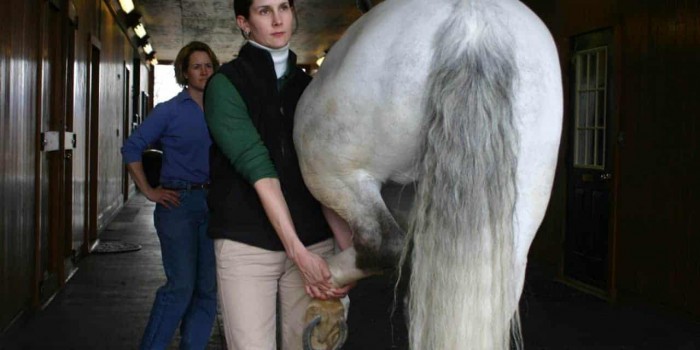
Muscle strain injuries of the hindlimb in horses.
Muscle strain injuries are common in human athletes and can also occur in horses. This article investigates the diagnostic findings, management and outcome of muscle strain injuries in horses with hindlimb lameness.
Eight horses were examined in a retrospective study. Diagnosis of muscle injury was determined by history taking, physical examination and the presence of abnormal ultrasound findings, compared with the contralateral limb, and, when required, nuclear scintigraphy. Muscle tears causing lameness were identified in the middle gluteal (3), semitendinosus (1), semimembranosus (2) and gracilis (2) muscles. Tears were classified as partial or complete. Treatment included rest, physiotherapy and gradual reintroduction to work. Treatment recommendations were recorded, and follow-up information was obtained during re-evaluation of horses at the hospitals or via telephone.
The results show that ultrasonography can be useful in the diagnosis of moderate to severe muscle strain injuries. The degree of lameness did not appear to be indicative of the extent of injury or of completion of healing. Furthermore, the prognosis seems favourable in the majority of cases, although recurrence of injury or lameness can delay the return to the original level of activity, and persistent gait abnormality may occur.
Expert opinion by Els Smet
In the previous study, not all horses complied to the treatment recommendations and this influenced the results. Generally early goals are aimed at minimising intramuscular haemorrhage and minimising inflammation. Gradual remobilisation and integration is then indicated to optimise healing. However, more research should be done as the effects of therapeutic interventions reported in animal models of muscle injury are sometimes conflicting.
> From: Walmsley et al., Aust Vet J (2010) 310-321. All rights reserved to Wiley Online Library. Click here for the online summary.


